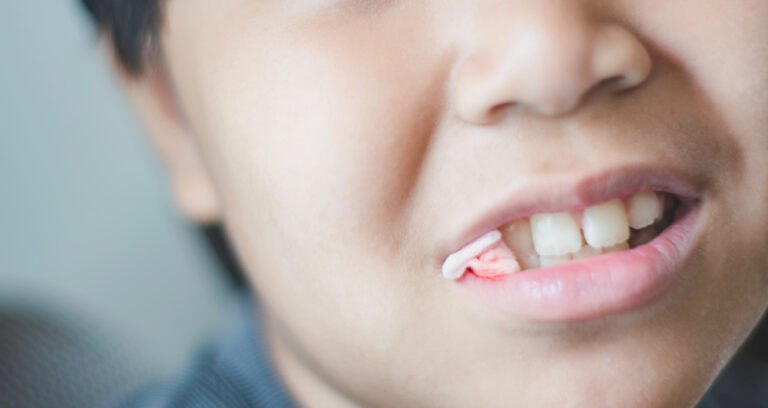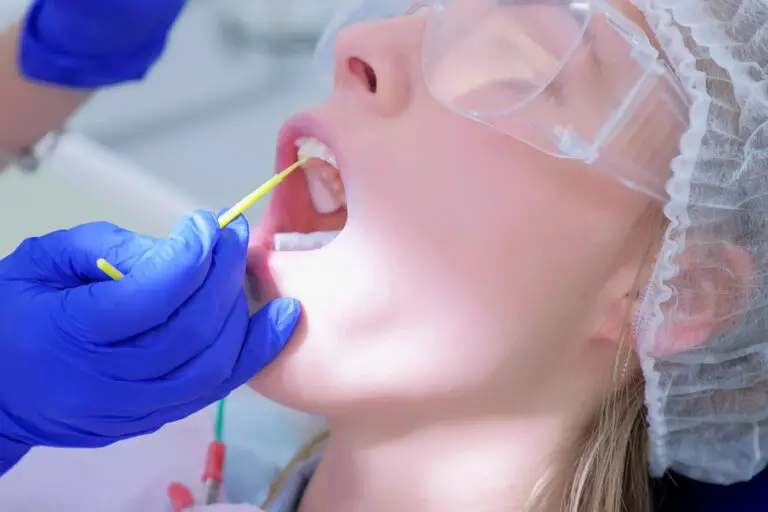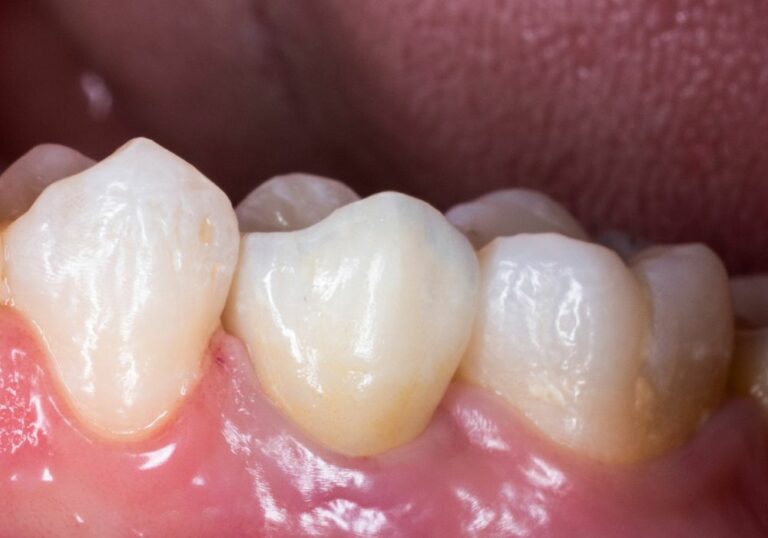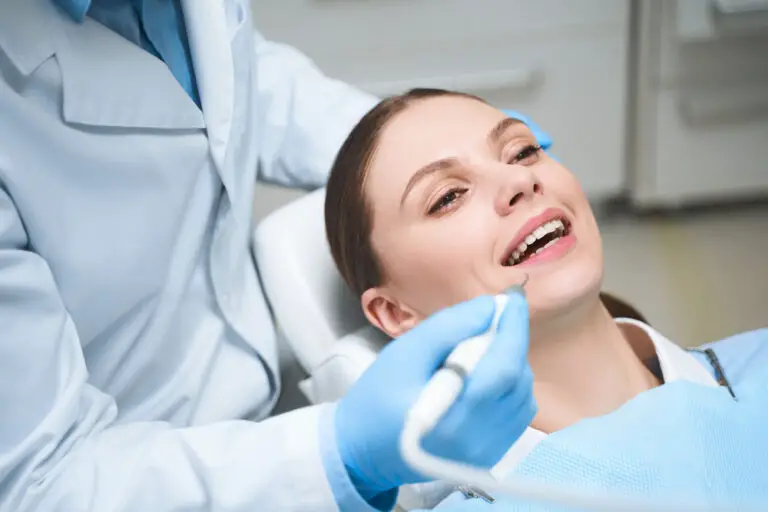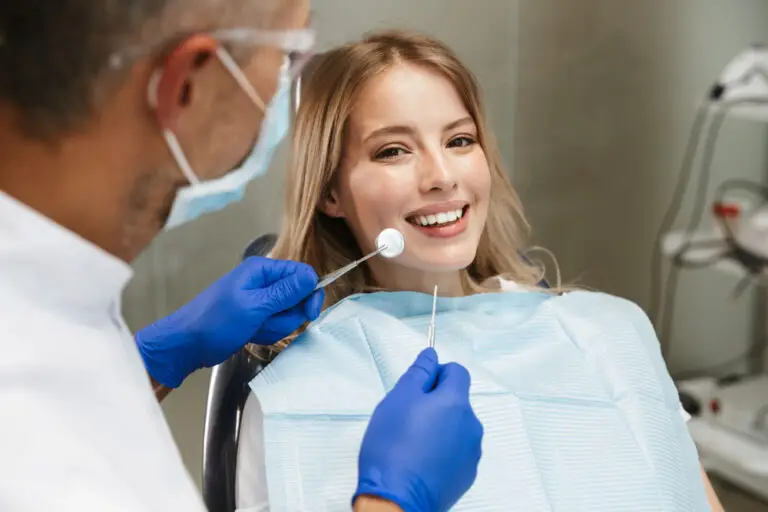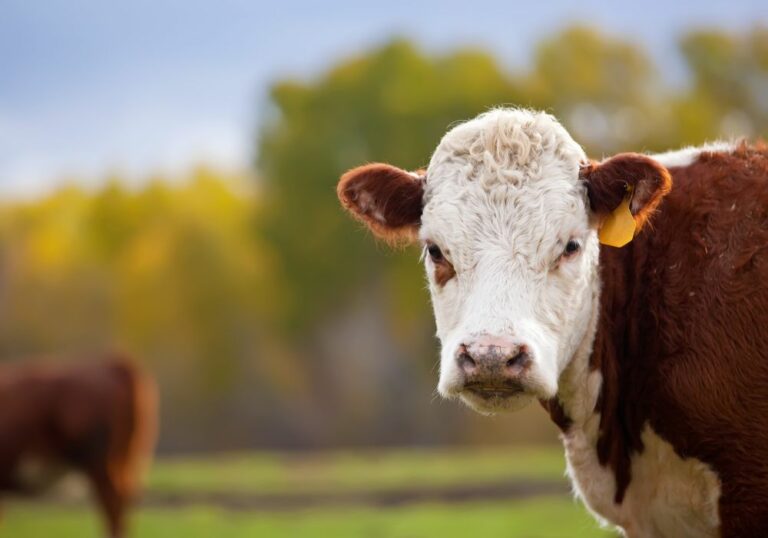If you’re a new parent, you may be wondering when you should start brushing your baby’s teeth with toothpaste. According to the American Academy of Pediatric Dentistry (AAPD), you should begin using fluoride toothpaste as soon as your baby’s first tooth appears. This is different from the previous recommendation of waiting until your child is two years old.
Using a rice-grain-sized smear of toothpaste, you can start brushing your baby or toddler’s teeth. Gradually increase the amount of toothpaste to a pea-sized dollop by the time your child turns three. This method can help prevent cavities and promote good oral hygiene habits from a young age. But when exactly can you expect your baby’s first tooth to appear?
Understanding Baby’s Oral Health
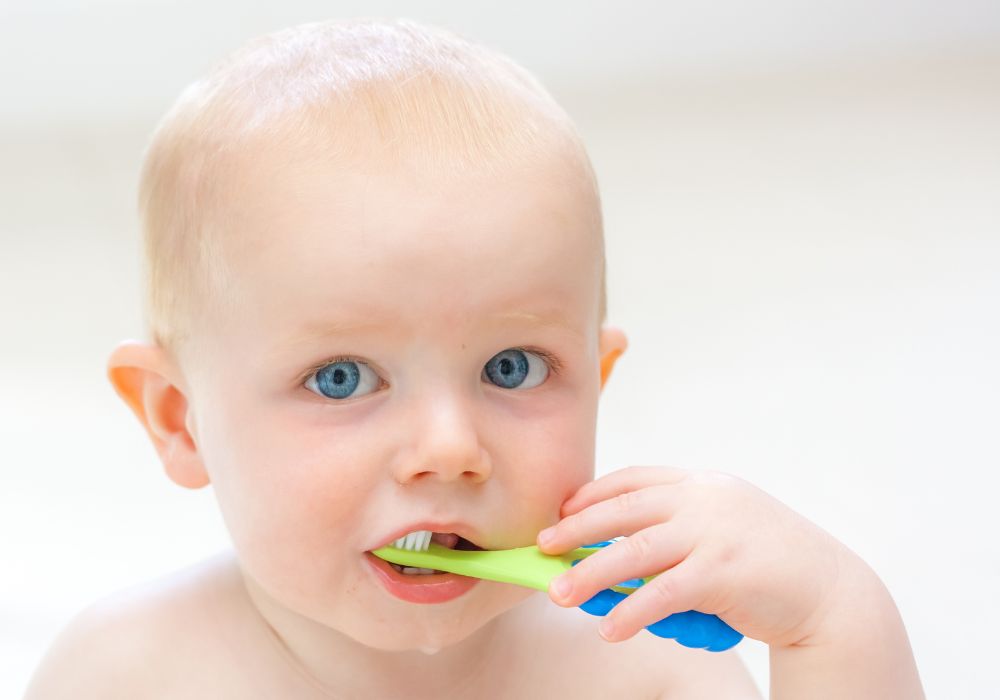
Taking care of your baby’s oral health is important for their overall well-being. Even before your baby’s first tooth appears, you can start taking steps to keep their mouth clean and healthy.
Here are some things to keep in mind when it comes to your baby’s oral health:
Cleaning Gums
Before your baby’s teeth come in, you can clean their gums with a soft, damp cloth or gauze. Gently wipe their gums after feedings to remove any milk or formula residue.
First Tooth
Once your baby’s first tooth appears, you can start using a toothbrush to clean their teeth. Use a soft-bristled brush and water to gently brush their tooth and gums.
Fluoride Toothpaste
When your child is about 3 years old, you can start using a pea-sized amount of fluoride toothpaste to brush their teeth. Make sure they spit out the toothpaste and rinse their mouth with water.
Brushing Technique
To brush your child’s teeth, angle the bristles towards the gumline and use circular motions. Brush the front, back, and top of each tooth. Make sure to brush their teeth for at least 2 minutes, twice a day.
Dental Visits
It’s important to take your child to the dentist regularly, even if they only have a few teeth. The dentist can check for any problems and give you tips on how to care for your child’s teeth.
By following these tips, you can help ensure your baby has a healthy mouth and teeth.
When to Start Brushing
As a new parent, you might be wondering when you should start brushing your baby’s teeth with toothpaste. According to pediatric dentists, you should start brushing your baby’s teeth as soon as their first tooth appears. This is usually around 4-12 months of age.
Before your baby’s first tooth appears, you can use a clean, damp washcloth, a gauze pad, or a finger brush to gently wipe their gums and the front of their tongue after meals and at bedtime. This will help remove bacteria and prevent the buildup of plaque.
Once your baby’s first tooth appears, you can start using a soft-bristled baby toothbrush and a tiny smear of fluoridated toothpaste. The American Dental Association recommends using toothpaste with fluoride as it can help prevent tooth decay. However, make sure to use only a tiny amount of toothpaste, about the size of a grain of rice.
It’s important to brush your baby’s teeth twice a day for two minutes each time. You can brush all sides of their teeth, including the front, back, and sides. If your baby objects, reassure them with smiles and cuddles, distract them with a toy or a song, or let them hold the toothbrush themselves under your supervision.
In summary, it’s best to start brushing your baby’s teeth as soon as their first tooth appears, and use a soft-bristled baby toothbrush and a tiny smear of fluoridated toothpaste. Brush their teeth twice a day for two minutes each time, and make it a fun and positive experience for your little one.
Choosing the Right Toothpaste
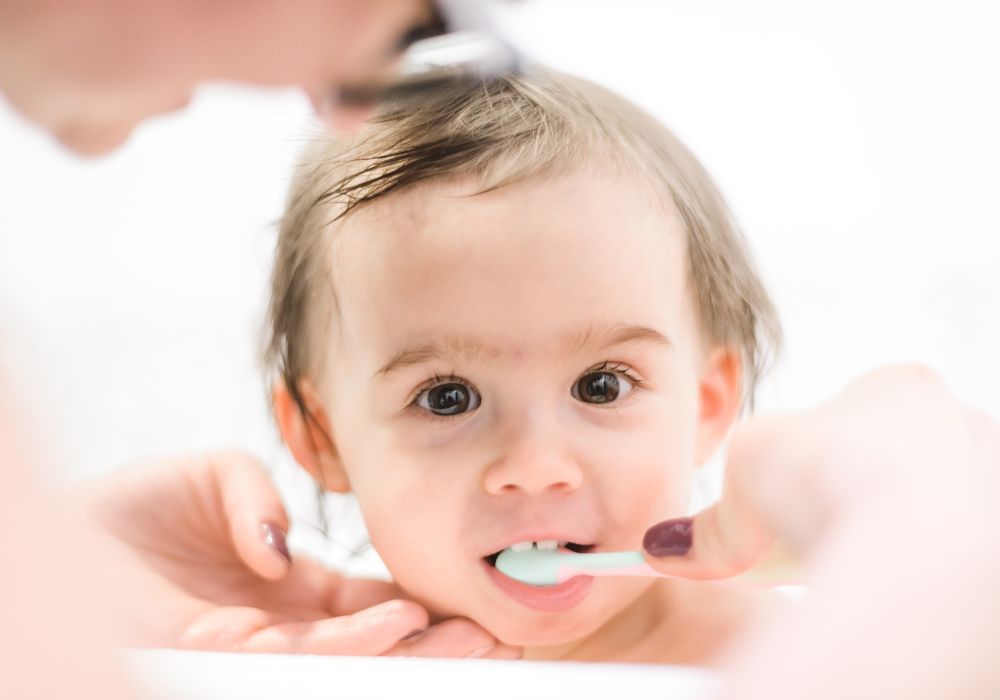
When it comes to choosing the right toothpaste for your baby, there are a few things to consider. Here are some tips to help you make the best choice:
Look for Fluoride
Fluoride is a mineral that helps prevent tooth decay. It is important to look for a toothpaste that contains fluoride, as this can help protect your baby’s teeth from cavities. However, it is important to use only a small amount of toothpaste, as too much fluoride can be harmful to your baby.
Avoid Harsh Ingredients
Some toothpastes contain harsh ingredients that can be harmful to your baby’s delicate gums. Look for a toothpaste that is specifically designed for babies, and avoid toothpastes that contain alcohol, sodium lauryl sulfate, or other harsh ingredients.
Choose a Flavor Your Baby Likes
Babies can be picky about the flavors they like, so it is important to choose a toothpaste that your baby will enjoy. Many baby toothpastes come in flavors like fruit or bubblegum, which can make brushing more enjoyable for your little one.
Check the Age Range
Different toothpastes are designed for different age ranges, so it is important to choose a toothpaste that is appropriate for your baby’s age. Some toothpastes are designed for babies as young as six months, while others are designed for toddlers and older children.
Talk to Your Pediatric Dentist
If you are unsure which toothpaste is right for your baby, talk to your pediatric dentist. They can recommend a toothpaste that is appropriate for your baby’s age and dental needs.
By following these tips, you can choose the right toothpaste for your baby and help protect their teeth from cavities and decay.
How to Start Brushing
Starting to brush your baby’s teeth is an important step in maintaining their oral health. Here are some tips to help you get started:
- Choose the right toothbrush: It’s important to use a soft-bristled toothbrush that is specifically designed for babies. Look for a toothbrush with a small head and a long handle that will be easy for you to hold.
- Use the right toothpaste: Once your baby has teeth, you can start using a small amount of fluoride toothpaste. Use a pea-sized amount of toothpaste and make sure your baby spits it out after brushing.
- Brush twice a day: You should brush your baby’s teeth twice a day, once in the morning and once before bed. This will help remove any food particles and bacteria that can cause tooth decay.
- Make it fun: Brushing your baby’s teeth can be a fun and bonding experience. Sing a song or make silly faces to keep your baby entertained while you brush.
- Be gentle: When brushing your baby’s teeth, use gentle circular motions to clean all surfaces of the teeth and gums. Don’t forget to brush the tongue and the inside of the cheeks.
- Be patient: It may take some time for your baby to get used to having their teeth brushed. Be patient and keep trying, even if your baby resists at first.
By following these tips, you can help ensure that your baby’s teeth stay healthy and strong.
Potential Challenges and Solutions
Brushing your baby’s teeth with toothpaste is an essential part of their oral hygiene routine, but it can come with its challenges. Here are some potential challenges you may face and some solutions to help make the process easier:
Challenge: Your baby doesn’t like the taste of toothpaste.
Solution: Try using a toothpaste that is specifically designed for babies and has a mild flavor. You can also try different flavors until you find one that your baby likes. Additionally, you can let your baby taste the toothpaste before brushing to get them used to the taste.
Challenge: Your baby won’t sit still during brushing.
Solution: Make brushing a fun and interactive experience by singing a song or playing a game while you brush. You can also try letting your baby hold their toothbrush or a toy while you brush their teeth. Another option is to brush your baby’s teeth while they are in their high chair or car seat to help keep them still.
Challenge: Your baby has a sensitive gag reflex.
Solution: Use a toothbrush with a smaller head and softer bristles to help reduce the likelihood of triggering your baby’s gag reflex. You can also try using a different brushing technique, such as brushing in a circular motion or using a back-and-forth motion, to see what works best for your baby.
Challenge: Your baby is teething and doesn’t want anything in their mouth.
Solution: Try using a clean, damp cloth to gently wipe your baby’s gums and teeth instead of using a toothbrush and toothpaste. You can also try using a teething ring or toy to help distract your baby while you clean their teeth.
Remember, it’s important to be patient and consistent when it comes to brushing your baby’s teeth with toothpaste. With time and practice, you and your baby will develop a routine that works best for both of you.
Maintaining Regular Dental Hygiene
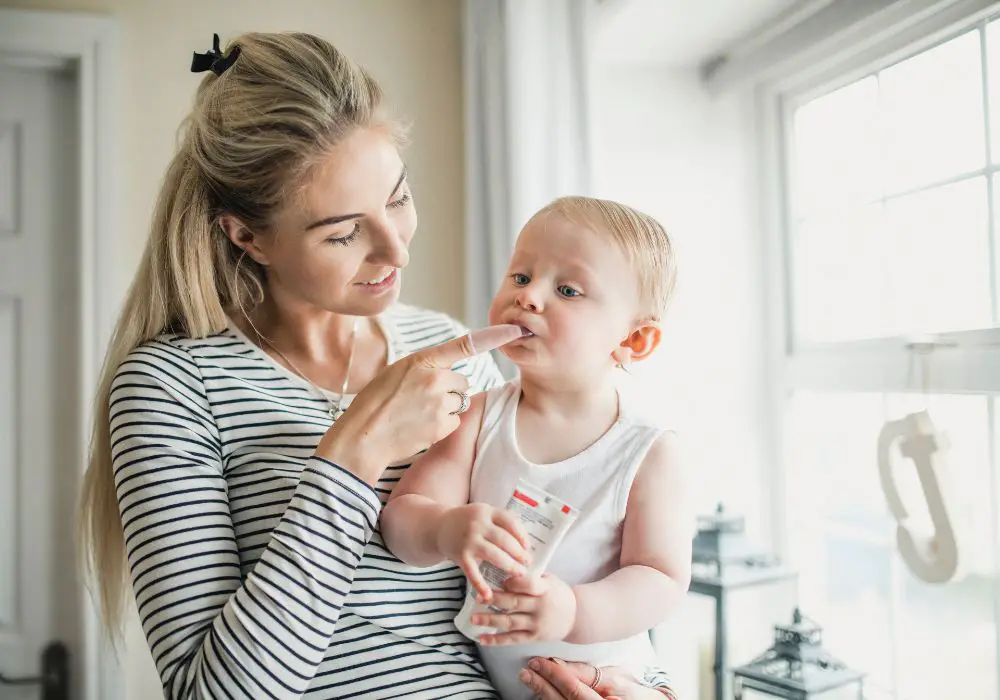
Maintaining regular dental hygiene is essential for your baby’s overall health. Here are some tips to help you keep your baby’s teeth healthy:
- Start brushing your baby’s teeth as soon as the first tooth appears. Use a soft-bristled baby toothbrush moistened with water and a rice grain-sized smear of fluoride toothpaste. Brush gently on the inside and outside, including along the gumline and chewing side of each of your baby’s teeth, as well as their tongue (if they’ll let you), to dislodge bacteria. Pediatric dentists recommend brushing your baby’s teeth at least twice a day.
- Use floss to clean in between your baby’s teeth. You can start using floss as soon as your baby has two teeth that touch each other. If your baby’s teeth are widely spaced, you may not need to floss until later.
- Avoid sugary drinks and foods. Sugary drinks and foods can cause tooth decay. If your baby drinks juice, make sure it’s 100% juice and limit it to 4 ounces per day. Avoid giving your baby sugary drinks like soda or sports drinks.
- Don’t put your baby to bed with a bottle. Milk or formula can pool in your baby’s mouth and cause tooth decay. If your baby needs a bottle to fall asleep, fill it with water instead of milk or formula.
- Take your baby to the dentist. Pediatric dentists recommend taking your baby to the dentist by their first birthday. The dentist can check your baby’s teeth and give you tips on how to care for them.
By following these tips, you can help keep your baby’s teeth healthy and set them up for a lifetime of good oral hygiene.
Visiting a Pediatric Dentist
Taking your baby to a pediatric dentist is an important step in ensuring good oral health. Pediatric dentists specialize in caring for children’s teeth, and they can provide valuable advice on how to care for your baby’s teeth.
During your first visit, the pediatric dentist will examine your baby’s mouth to check for any signs of tooth decay or other issues. They may also provide guidance on proper brushing techniques and recommend specific toothpaste brands that are safe for your baby to use.
In addition to providing dental care, pediatric dentists can also answer any questions you may have about your baby’s oral health. They can offer advice on topics such as teething, feeding practices, and how to prevent baby bottle tooth decay.
Overall, visiting a pediatric dentist is an important step in maintaining your baby’s oral health. By working with a qualified dentist, you can ensure that your baby’s teeth stay healthy and strong as they grow.
Long-term Oral Health Habits
Brushing your baby’s teeth with toothpaste is just the first step in establishing good oral hygiene habits that will last a lifetime. Here are some tips for ensuring your child’s long-term oral health:
Regular Dental Check-Ups
Regular visits to the dentist are crucial for maintaining healthy teeth and gums. The American Dental Association recommends that children see a dentist by their first birthday or within six months of their first tooth eruption. After that, your child should see a dentist every six months for routine check-ups and cleanings.
Healthy Diet
A healthy diet is essential for good oral health. Encourage your child to eat a balanced diet that includes plenty of fruits, vegetables, and whole grains. Limit sugary and acidic foods and drinks, such as candy, soda, and fruit juice, which can contribute to tooth decay.
Fluoride
Fluoride is a mineral that helps strengthen tooth enamel and prevent tooth decay. Most tap water in the United States contains fluoride, but if your water source does not, talk to your dentist about fluoride supplements or treatments.
Mouthguards
If your child plays sports or engages in other high-risk activities, a mouthguard can help protect their teeth from injury. Talk to your dentist about getting a custom-fitted mouthguard for your child.
Lead by Example
Children learn by example, so make sure you are practicing good oral hygiene habits yourself. Brush and floss your teeth regularly and visit the dentist for routine check-ups and cleanings. By setting a good example, you can help ensure that your child develops healthy oral hygiene habits that will last a lifetime.
Frequently Asked Questions
At what age can I start using toothpaste on my baby’s teeth?
You can start using toothpaste on your baby’s teeth as soon as the first tooth appears, which is usually around 6 months of age. However, it is recommended to use only a small amount of toothpaste, about the size of a grain of rice, until your child is 3 years old. After that, you can use a pea-sized amount of toothpaste.
How do I introduce toothpaste to my baby?
You can introduce toothpaste to your baby by putting a small amount of toothpaste on a soft-bristled baby toothbrush and gently brushing their teeth. You can also let your baby taste the toothpaste to get them used to the flavor. Make sure to supervise your baby while they brush their teeth to prevent them from swallowing toothpaste.
Can I brush my 1 year old baby teeth?
Yes, you can brush your 1-year-old baby’s teeth. It is important to start developing good oral hygiene habits early on to prevent tooth decay and other dental problems. Use a soft-bristled baby toothbrush and a small amount of toothpaste to brush your baby’s teeth twice a day.
How often should I brush my baby’s teeth?
You should brush your baby’s teeth twice a day, once in the morning and once at night. This will help remove plaque and prevent tooth decay. As your child gets older, you can encourage them to brush their teeth on their own, but make sure to supervise them to ensure they are brushing properly.
Should I brush my baby’s teeth before or after milk?
It is recommended to brush your baby’s teeth before milk in the morning and after milk at night. This is because milk contains sugars that can lead to tooth decay if left on the teeth for too long. Brushing before milk in the morning helps remove any bacteria that may have built up overnight, while brushing after milk at night helps remove any remaining milk and bacteria.
What is the best baby toothbrush and toothpaste?
The best baby toothbrush is a soft-bristled toothbrush with a small head, designed specifically for infants. You can choose a manual toothbrush or an electric toothbrush, depending on your preference. For toothpaste, choose a fluoride toothpaste that is specifically designed for babies and toddlers. Make sure to use only a small amount of toothpaste, as too much fluoride can be harmful to your baby’s teeth.

